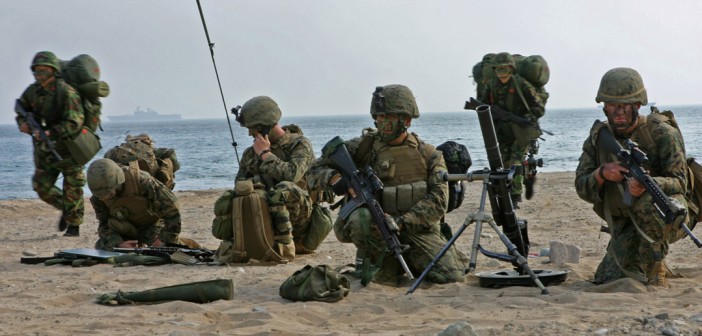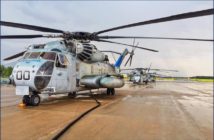Gramps was honored to have Lieutenant General David Berger as our speaker for the August meeting. He gave us a great deal of insight into the status of our military and especially the Marines and Navy. He started with the high level condition of the Corps and discussed budget, money, numbers of deployed troops and how his team at Camp Pendleton must be always prepared for rapid deployment as needed for problems that may arise.
When it comes to aviation, there is a significant need for better fixed wing and helicopter readiness in the presence of the downsizing of the USMC in these days in a war-like world. This issue is being taken care of. There is the longstanding issue of the integration of women into the military, an issue that the Secretary of Defense is expected to resolve in the future. There will be a change of commandants of the USMC and USN coming soon.
His unit, the First Marine Expeditionary Force, has 51,000 members some of whom are on three carriers in the Middle East flying missions into Iraq, Yemen and Syria in partnership with the USN. The Australians have invited 2500 American troops to be based there by next year for missions to Kuwait, Jordan for the purpose of flying strike missions and for rescue missions as needed. There are to be advisor teams in Iraq who are to advise only with no combat duty, leaving the fighting to the Iraqis.
In the aviation field there are major changes in progress that are needed to progress further. They include the F-35 with its sensors and resistance to radar identification. He described it as an advanced reconnaissance vehicle that also has terrific attack capabilities as a bomber and fighter aircraft. The other major aircraft change is the increasing use of the MV-22 Osprey that is the replacement for the older helicopters like the CH-53. Its advantages are markedly higher cruise speed and range, midair refueling and the ability to land in very difficult places as well as on shipboard. It will replace the current carry on board aircraft now supplying carriers at sea. Their use will require the availability of more tankers for inflight refueling than are now available.
Another issue is the increasing maintenance requirement for the current F-18 and Ch-53 aircraft that are being utilized at over 50% of their planned life expectancy. The maintenance requirements are increasing greatly due to their age. This problem is being addressed.
People are an increasingly important value, especially NCO’s. More are needed due to the increasing duty requirements and the increasing responsibility for making critical decisions on their own. Increased educational requirements are now being required for promotion. Additionally, aircraft are now much more complex than in the past, requiring a much higher level of training and experience in those who service them. This is further complicated by competition of the USMC and USN with civilian airlines and other flight maintenance businesses that can afford to pay significantly more to mechanics than they earn in the service. The same is true for aircrew.
Both the USMC and USN are viewed as healthy, although facing a new kind of threat resulting in lower ranking members making more important decisions. As these members gain training and talent, a major worry is can they be retained in the military? Cyber warfare is a new and constant threat but this is being dealt with constantly and aggressively.
The use of drones is very advanced in the Corps. They are using small as well as large drones that can be refueled in flight. These are considered critical to the operation of the Corps. Another issue is the availability of refueling tankers. The older fleet is very costly to keep in action as the aircraft age and require more and more maintenance. This is being addressed.
The General discussed the Wounded Warrior facility at Pendleton. It is currently caring for many veterans in ways that far exceed mere wound treatment. This is available because combat casualties are now few in number. This includes assisting in the conversion back to civilian life and dealing with psychological problems. He also mentioned the Naval Hospital on base that is available to all members of our military.
We are grateful to General Berger for his optimistic report on our forces and their improving equipment, training and command ability. This was an excellent presentation for our membership’s interests.




